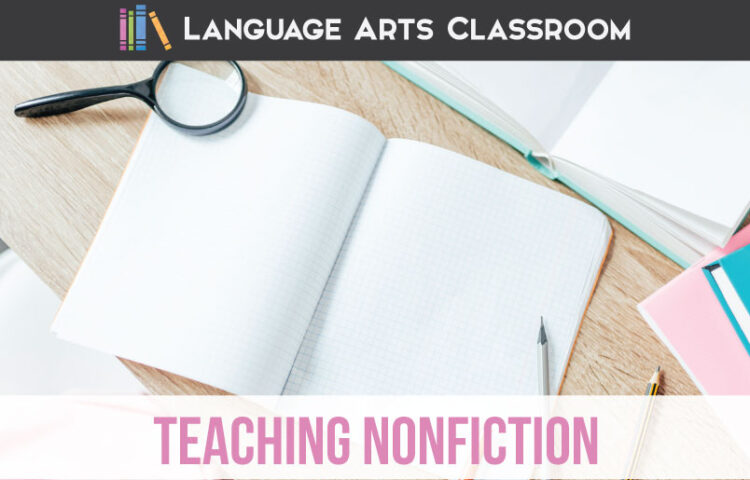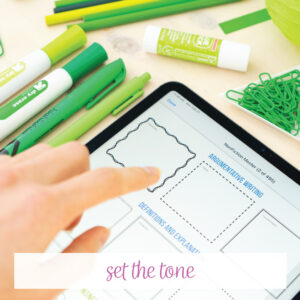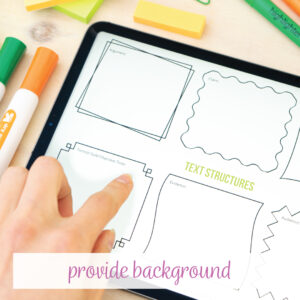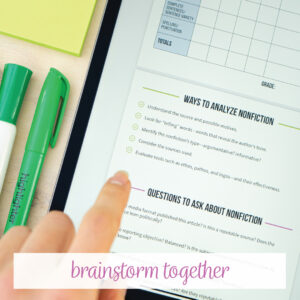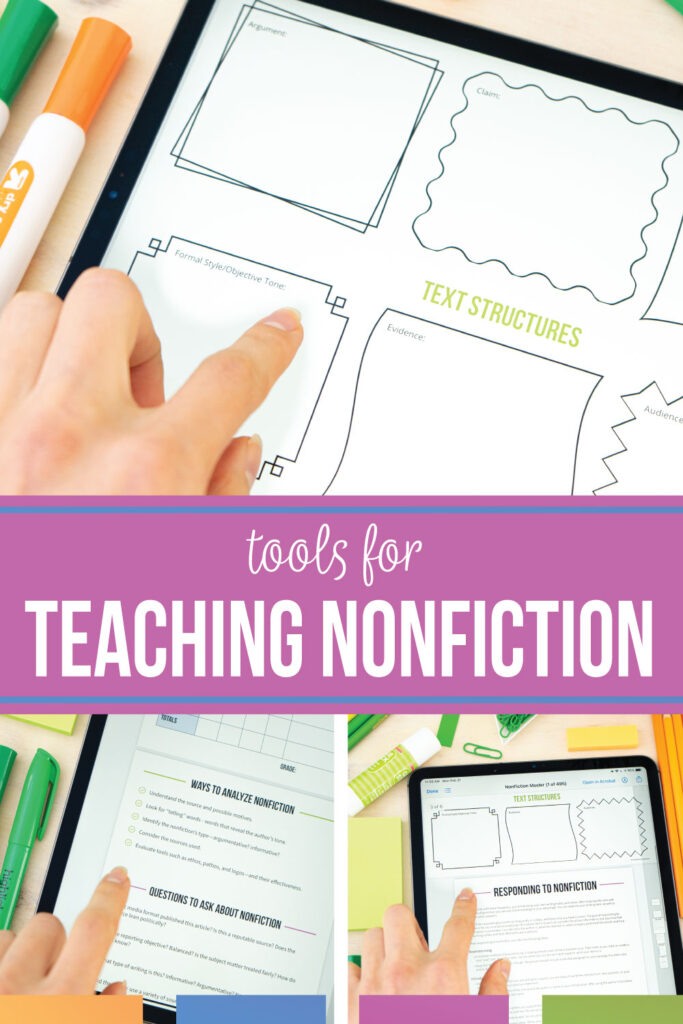Teaching nonfiction? I almost titled this, “how to teach nonfiction without putting your students to sleep or confusing them.” This post is a look into my crafting nonfiction reading responses with my students.
I teach nonfiction alongside literature and poetry, but I also complete a larger nonfiction unit and require students to compose thoughtful and appropriate responses to nonfiction. I feel that this readies them for college and careers, and I’ve found that students (and adults) struggle to respond maturely to a variety of subjects. Since the nonfiction responses are shorter than larger research papers, I also have the opportunity to help students with common writing errors.
Plus, engaging students with strong pieces of nonfiction shows them another genre. Actually—most adults read nonfiction daily at work and as active citizens. When I consider crafting a nonfiction unit for high school, I consider what pieces to include, and what methods will encourage students in their understanding.
How can nonfiction be effectively incorporated into secondary ELA curriculum?
Incorporate nonfiction in secondary ELA by selecting texts relevant to students’ interests and current events. Use graphic organizers to teach text structures, support comprehension with discussions and activities, and encourage critical thinking through analysis of author’s purpose and bias.
Teach nonfiction in secondary ELA.
Below is my process for teaching nonfiction. You should be able to apply this process to any piece of nonfiction and make it your own. Plus, no matter what nonfiction activities you use, you will cover specific English standards in your lesson plan.
Finally, I will provide examples throughout the post, but you of course can use nonfiction texts you already have.
Set the tone.
Nonfiction will be the majority of what students read as they leave high school. It is heavily covered on standardized tests because colleges expect students to proficiently read it. Nonfiction is a multifaceted source that requires analytical skills.
Before diving into a piece, students and I devote time to discussing when they will read nonfiction. Part of being a citizen is staying abreast of important situations. Remaining modern in whatever field they study will require reading updates. We will also discuss text features of informational texts like headings, sidebars, and diagrams.
Next, I start with a high-energy piece that will interest them and that I can bring to life with images. (You can download that one for free.) Often, I let students do the work for me and find images that match the nonfiction piece! This provides an opportunity into discussing valuable resources and citing sources. We spend some time brainstorming and playing with the topic before diving into creating a nonfiction reading response.
No matter what the first nonfiction article is, I provide “extras” to help students understand the material. I’m ready to scaffold with graphic organizers or brainstorming as a class. Then, we move to reading and understanding the nonfiction piece.
Provide background.
Just like any lesson, I activate prior knowledge while teaching nonfiction. For instance, students love learning about advertising and marketing. When I teach a nonfiction article about marketing, I detail what “marketing” is. (Most close reading requires some vocabulary background.) Students will acknowledge print, radio, Internet, and visual advertising. Students and I will search for examples and videos to become “mini experts” on marketing.
We continue our discussions. I remind them that marketing encompasses more than standard commercials. The colors, fonts, container shapes—everything associated with a product contributes to the marketing message. Students wouldn’t regularly know this, and by giving them background, I’m setting them up for success.
To alert students, I also tell students that they will be responding in writing to the nonfiction piece we read. The background information is not necessary to their written responses, but they are welcome to cite it. Alerting students allows them to track their sources they might use later.
Brainstorm together.
I believe in the power of analysis together. For every piece of nonfiction, we read some or all of the piece together and brainstorm varying angles together. Doing so builds empathy and a classroom community.
In the Energy Drink piece (the free download to which I previously linked) students relate to the topic because students and/or their peers drink energy drinks. I discuss the author’s attitude with students and look for specific words that show the author’s angle. Sometimes, we simply make a chart on the board and add examples. Don’t think that you need to create a huge activity for students to find meaning!
For the first nonfiction piece, we analyze views together. The next time, students might work with a partner. As continue with nonfiction, I release students and have them complete more work alone. However, we always have a discussion point concerning the nonfiction reading response.
Another important topic we discuss is the opposing view. Students might not find an opposing view in the article, but one probably exists. It is important for students to look and not simply swallow the viewpoint in front of them.
Write a response!
After looking at the background, reading the nonfiction piece, and analyzing it, students write about the topic. Not only do students discuss the nonfiction text (through brainstorming), but they also formulate their own ideas (through writing). This approach to teaching nonfiction allows me to meet standards in several categories.
This process is fun for me (and hopefully my students) because the writing prompts are limitless. If you’re covering nonfiction for the first time, you might wish to give students one or two writing topics. Also, if you need to meet argumentative or informative writing standards, you might need to specify a topic.
The more you teach nonfiction, the more comfortable you’ll become. At this point, I can provide suggestions but then allow students to take ownership of their response’s directions. Teaching nonfiction requires allowing students to shape the responses as they seem fit while meeting the requirements. The shaping of what interests them in a nonfiction text will carry over into what they glean from nonfiction outside the classroom.
Finally, I also keep nonfiction in my classroom library. Students have other opportunities to interact with nonfiction books aside from assignments, and I find that when students are familiar with nonfiction, explicitly teaching nonfiction becomes easier.
This post is a quick rundown of how I approach teaching nonfiction. I would love to collaborate with other English teachers: What methods help you in your nonfiction units for high school students? Is your process similar?
If you need pre-made nonfiction materials, I have five weeks of material in my Nonfiction Unit of Current Issues. All samples (and more) used in this blog post are included in this unit.
Looking for more nonfiction teaching ideas? Melissa has you covered at Reading and Writing Haven.

